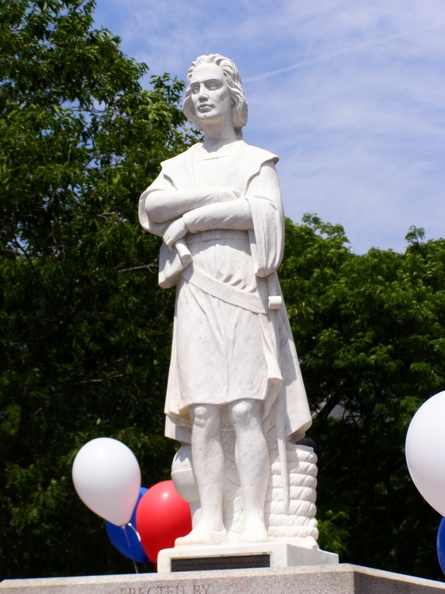One of numerous activities that I’ve given up since the statue genocide happened is reading the newspaper.
I used to read the Boston Globe every day, as well as two small local papers every week. But now the news is so filled with triggers, opinions that make me angry, and reminders of the horrible things that have happened, that I’ve decided to give it up. I have always valued being informed about world events, politics, and the happenings in my community, and have always found the news interesting. But these benefits are no longer worth the pain that consuming news now causes.
Last week, my dad visited my uncle at his new apartment and picked up a copy of that town’s local paper. Thinking he was being nice, he gave it to me, and against my better judgment I decided to read it.
Despite the fact that it was only a small, local weekly newspaper, I could feel my mood steadily decline while reading it.
A column about how the town was celebrating St. Patrick’s Day immediately triggered comparisons with how our society treats Columbus Day. Why is one ethnic group’s holiday embraced almost universally, with parades, the wearing of the green, playing of traditional Irish music, and consumption of traditional Irish food and drink, while another ethnic group’s holiday is either ignored, condemned, attacked, protested against, or abolished entirely?
I became angry when reading a press release from the office of Rep. Ayanna Pressley, which bragged about the “just and equitable” district she was creating by securing funding for childcare and programs to help young parents. How is it just or equitable to discriminate against people who do not have children? I found myself wondering.
Similar thoughts were brought forth by an article about a housing voucher program, which was described by the town’s mayor as particularly important because of the disproportionate impact of the housing crisis on people of color and families with young children. Again, I wondered why, in the eyes of society, do white people and people without children always seem to matter less?
The “Beacon Hill Roll Call” column reminded me of the bills to abolish Columbus Day, to force people to undergo medical procedures against their will, and to discriminate against people like me in various other ways, which have been considered by the state legislature at various points in time, some of which unfortunately are still under consideration.
An editorial about Women’s History Month brought to mind thoughts about why other heritage months, such as Confederate History Month and Italian Heritage Month, are not celebrated with equal enthusiasm.
Even an article about subway track work and station improvements caused a pang of sadness. As an autistic person, my special interest is history and statues, exactly the thing that our society over the past four years has decided to destroy. I know several fellow autistic people whose special interest is trains, and I know that they would enjoy reading about these new MBTA developments. It was bittersweet to think about how others are still able to enjoy news about their special interests, while for mine the only available news centers on condemnation and destruction.
The “On This Day In History” feature, something that had been my favorite part of every newspaper since I was 10 years old, reminded me of how much things have changed. I learned that on that particular date, Hernan Cortez had landed in what is now Mexico, and Jefferson Davis had signed a bill authorizing slaves to fight in the Confederate Army. These would simply have been interesting facts to my past self, but now I cannot hear the names of Cortez or Davis without being reminded of how our society has decided to attack, condemn, and largely obliterate from existence, these historical figures.
Because I have always found news interesting and have always valued being informed, my goal has been to one day add the news back into my life. But I have found that right now, the best way of building a life that is worth living is to turn towards my inner world and away from the outer one. Drawing, writing stories about my imaginary world, organizing my toy soldiers, figurines, and dolls, and spending time with my Stonewall statue… these are the activities that bring comfort, joy, peace, and a sense of control. The news, on the other hand, is filled with nothing but oppression, meanness, and injustice.
Perhaps this will change one day, but perhaps not. Maybe my healing will progress, my resilience will increase, my mental state will stabilize, and the world will change for the better, to the point where I will be able to add the news back into my life. But for now, it’s best that I stay away from it.




